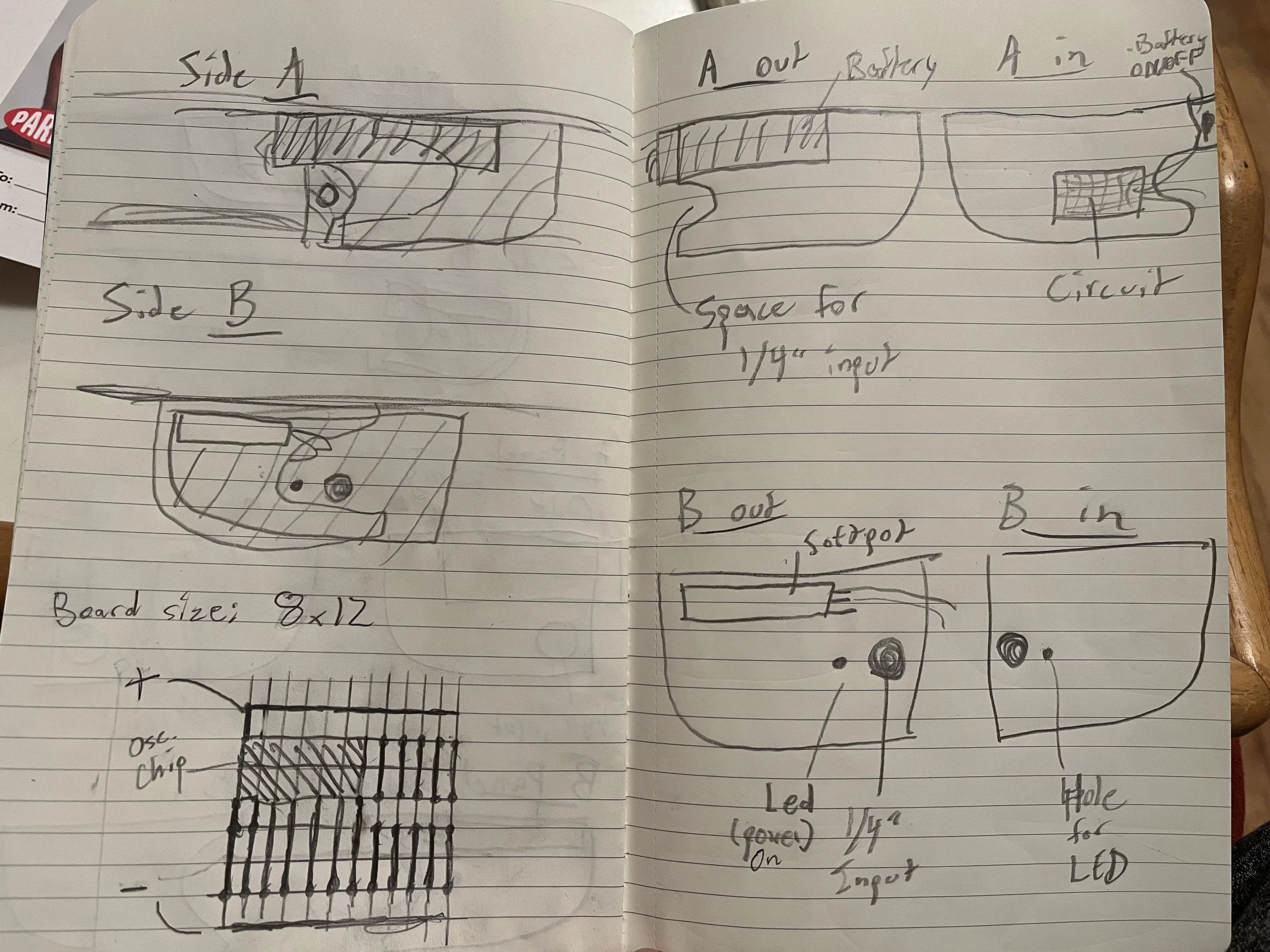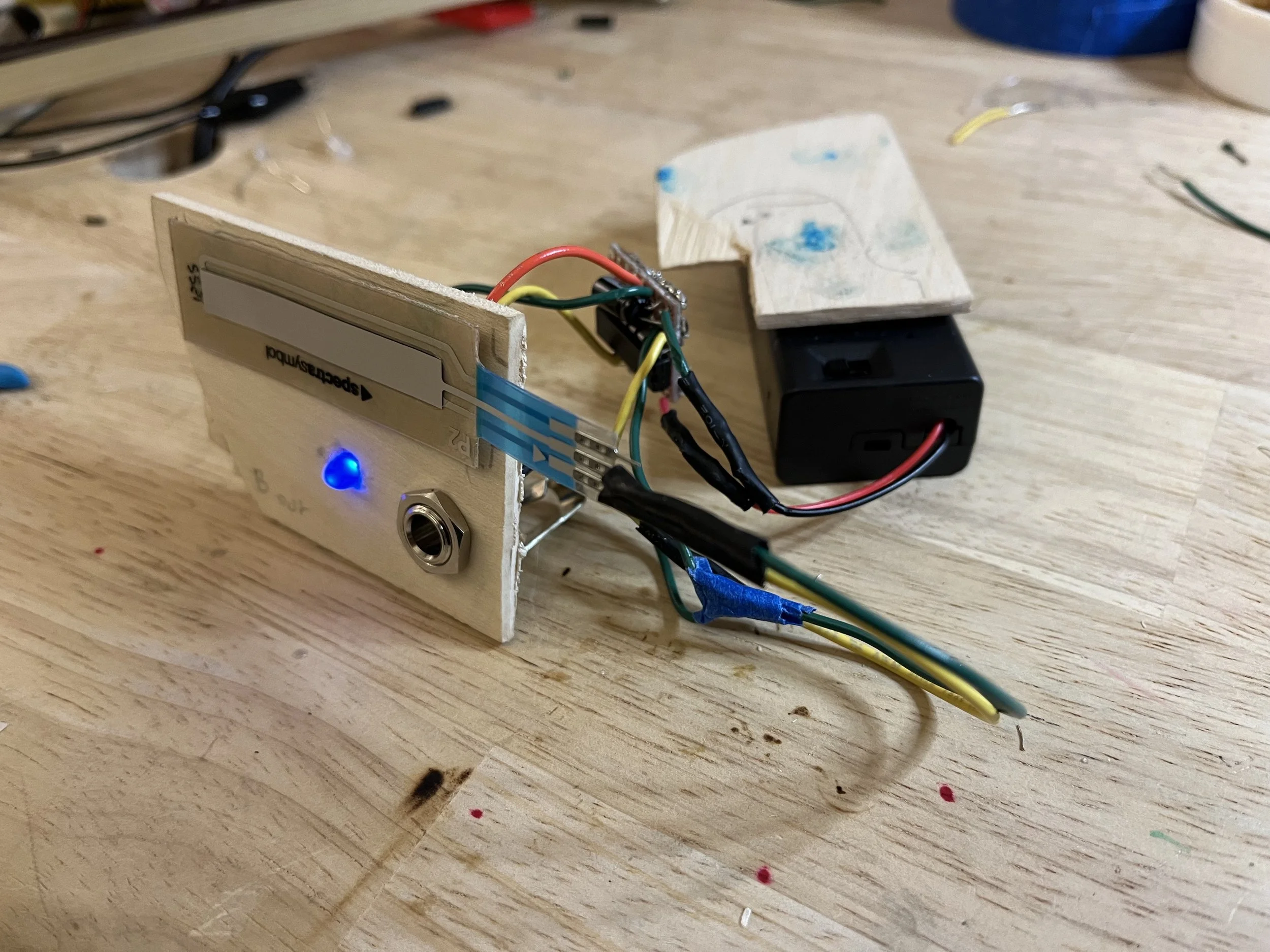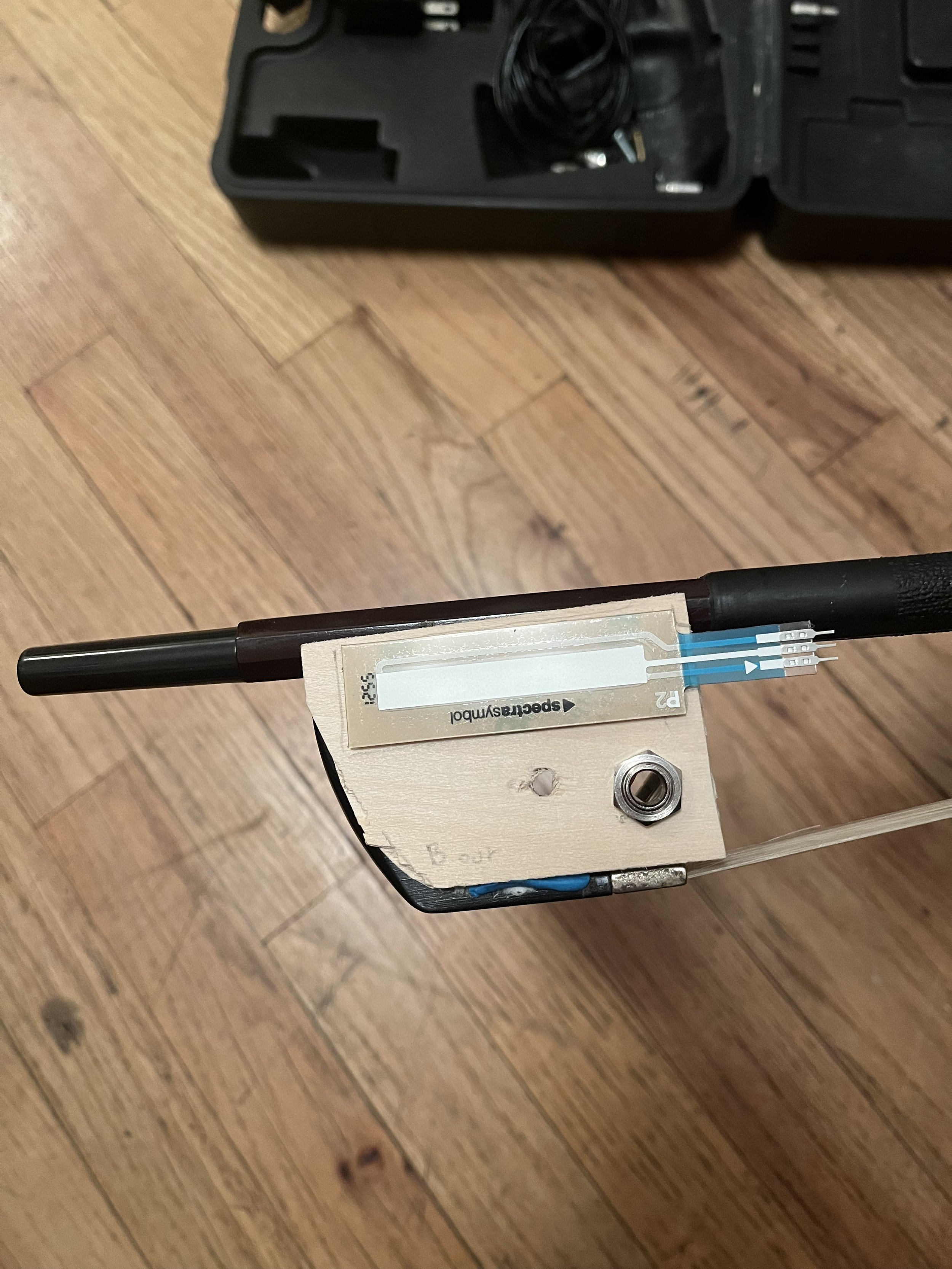The Magic Bow 1
An augmented double bass bow that integrates electronic sounds in a double bass performance.
Devised and constructed by Ethan Cohn
For this project I aimed to create a bass bow that could plug into an amplifier. This bow would seamlessly incorporate electronic sounds into a double bass performance.
The circuit involved a simple oscillator, connected to a 1/4” output. In order to control the pitch, I would have to add a resistor that received some sort of input from the performer.
The first completed version involved a touch pad on the frog of the bow, called a SoftPot (soft potentiometer). This changed the resistance based on finger placement. I placed the SoftPot on the frog in a way that worked well with traditional bow technique.
The circuit requires a 9v battery to run. I attached the battery pack on the player’s side of the bow.
In order to mount the circuit, SoftPot, output jack, and battery, I cut wood panels that attach to the bow with velcro. This way, the whole mechanism can be taken on and off without damaging the bow.
The first completed circuit.
Sketch of the components’ placement
An LED indicates that the bow is powered on
The Magic Bow 2
For the next version, I attached a photoresistor to the tip of the bow. This receives light input and converts it to electronic resistance.
For the next version, I attached a photoresistor to the tip of the bow. This receives light input and converts it to electronic resistance.
I added a button to the frog of the bow, which the player presses to make sound. The pitch is controlled by light input: the brighter the light, the lower the resistance and the higher the pitch.
Since this required attaching a part to the tip of the bow, I added small wood panels and velcro to the tip of the bow, so the tip piece could be easily attached and removed.
This version requires a specific lighting environment in order to work best, and is therefore less versatile than Magic Bow 1, which requires no special lighting. The advantage of Magic Bow 2 is that more drastic changes in pitch are possible, and these changes align with the natural bow movement of bass playing.















